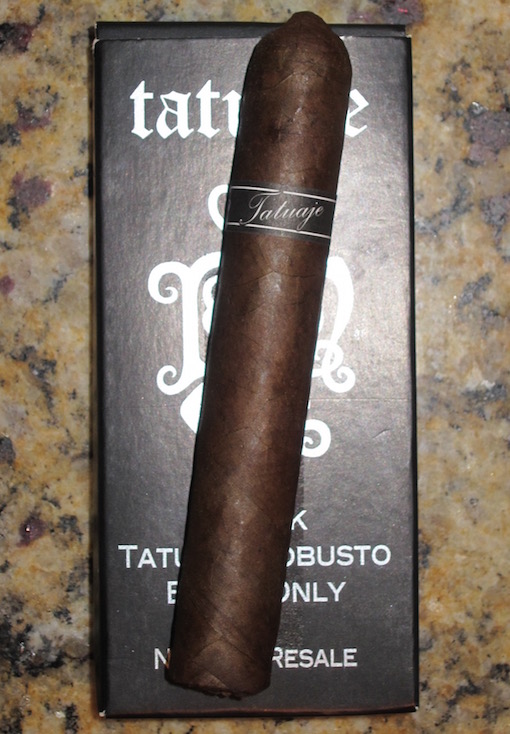After realizing I had one stick left of each of the two cigars I blended in May 2012, I decided this week—almost exactly three years after the Cigar Safari trip—would be a fitting time to fire them up. This little experiment, after all, offers a somewhat unique opportunity to see how time impacts a cigar.
I say “unique†because it isn’t often I smoke a cigar right after it’s rolled, log its impressions, wait three years, then smoke another sample that was rolled on the same day by the same person with the same tobaccos. But that’s the case here. Virtually the only variable is age. In addition, I get to do the same experiment twice: once with a milder Connecticut Ecuador-wrapped cigar made at Joya de Nicaragua (see my article from Monday), and once with a bolder Brazilian Mata Fina Oscuro-wrapped cigar made at Drew Estate.
As a reminder, please note I did not grow, cultivate, ferment, or actually roll any of my cigars. All the hard work was done by the fine folks at Joya de Nicaragua and Drew Estate, respectively. My role simply consisted of some educated guessing, a little trial-and-error, and selecting a wrapper, a binder, and a filler blend from available tobaccos.
Here’s what I had to say about the Drew Estate blend back in 2012:
Drew Estate Blend
Wrapper: Brazilian mata fina oscuro
Binder: Habano Ecuador
Filler: Estelà Seco (33%), Jalapa Ligero (33%), Brazilian Mata Fina (33%)
Size: 5.25 x 42

My objective here was to get a medium-bodied smoke that’s low on spice but big on dark chocolate flavors—something that would pair nicely with a glass of red wine. That’s why I loaded it up with Mata Fina, a tobacco that’s typically sweet and chocolaty. In my blend, though, the Habano Ecuador binder and Seco and Ligero fillers unexpectedly shine though. The result is a profile devoid of chocolate or any sweetness. Instead, the flavor packs dry spice, leather, and oak. I like this cigar, and it is getting a little better each month, but it isn’t at all what I had intended.
Much like the Joya de Nicaragua blend, I smoked through nine of the ten samples of this Drew Estate-made cigar pretty quickly. In fact, I’d wager I (somewhat carelessly) smoked all nine before the end of 2012. So, when I recently lit the tenth and final cigar, I didn’t really know what to expect from a smoke that’s been off my radar for two and a half years.
What I found was a dry, familiar profile of oak, leather, and spice. This trio of flavors was punctuated by significant cayenne heat on the tip of the tongue, especially in the aftertaste. While the cayenne seemed new, a pair of unfortunate traits were consistent with my earlier samples of the blend: an occasional (but brash) bitterness, and a shortage of sweetness to balance out the spice.
Looking back, instead of writing “I like this cigar,†I should have conceded that this blend not only misses its intended mark, but it’s also incomplete, unbalanced, and slightly abrasive. Three years of age have not yielded the improvements the cigar desperately needed.
–Patrick A
photo credit: Stogie Guys


 1) The Wall Street Journal recently ran an
1) The Wall Street Journal recently ran an 




 Patrick Ashby
Co-Founder & Editor in Chief
Patrick Ashby
Co-Founder & Editor in Chief Patrick Semmens
Co-Founder & Publisher
Patrick Semmens
Co-Founder & Publisher George Edmonson
Tampa Bureau Chief
George Edmonson
Tampa Bureau Chief